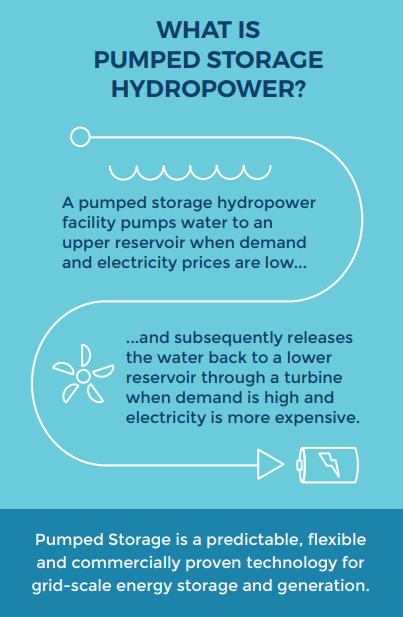Hydropower has long been a reliable source of renewable energy in the United States, providing a cumulative 10% of U.S. electricity generation between 1950–2015. Today, hydropower is still a major source of renewable energy in the country, providing low-cost, low-carbon energy and flexible grid support.
The Hydropower Vision Report took a close look at the approximately 101 gigawatts (GW) of hydropower capacity in the United States in 2014. Of the total 101 GW, 79 GW came from hydropower generation facilities and 21 GW from pumped storage hydropower (PSH) facilities. The report detailed hydropower’s status in eight key areas.
1. History and Context of Hydropower

Most hydropower facilities in the United States were built between 1940 and 1970, so much of the existing hydropower fleet is now aging. In addition to power generation, these facilities provide services such as recreation, flood management, irrigation, and water supply. Despite these valuable services, hydropower can also have some negative impacts, like affecting aquatic habitats and fish passage through dams. Resource and regulatory agencies implement measures to avoid, minimize, and mitigate these environmental effects to lower the impact of hydropower.
2. Hydropower’s Role in the Grid
Hydropower provides a full range of services to the electrical grid, but its ability to rapidly ramp generation up or down makes it a key element supporting renewable integration with the grid. Because some sources of renewable energy are variable—like wind and solar—hydropower’s ability to generate consistent power on demand makes it a reliable energy source for the grid. Plus, small hydropower projects have the potential to contribute as distributed energy resources, supporting the development of microgrids and improving energy resilience.
3. Hydropower Markets
Market compensation for hydropower across the country varies by region and ownership. Plus, the growing amount of energy being generated from variable renewables is also affecting hydropower compensation. Improving how hydropower is valued across power and other markets could help decrease the variability and uncertainty in its market performance.
4. Opportunities for Hydropower Development
Key to growing hydropower development is balancing environmental performance and sustainability with public energy needs and water resources. Usually, there are multiple objectives for water use that must be considered in addition to hydropower energy generation. Improving collaboration during the hydropower development process and taking a basin-scale approach to watershed management could benefit all stakeholders relying on the same water resources.
5. Hydropower Design, Infrastructure, and Technology
Advancing the design and technology of hydropower facilities enhances existing infrastructure and increases hydropower’s economic viability while minimizing its environmental effects. Research and advances in turbine design, instrumentation and control equipment, and construction approaches are improving hydropower operations and lowering costs. New environmental protection technologies, such as fish screens and fish-friendly turbines, are also helping minimize the environmental impacts of hydropower facilities.
6. Hydropower Operations and Maintenance

Operations and maintenance activities at hydropower plants are critical to running facilities safely and reliably. Operational decisions are closely linked to both the river system and power grid, requiring complex coordination to ensure environmental compliance and necessary power generation. By identifying best practices and benchmarking, operational improvements at hydropower facilities can help facilitate the sustainable growth of hydropower.
7. Pumped Storage Hydropower
Energy storage is a critical component for a modern grid that relies on renewable energy, and PSH provides 93% of all the utility-scale storage in the United States, as of 2021. By helping balance grid operations, PSH reduces electricity costs and provides essential stabilizing services to the grid.
8. Hydropower’s Economic Impact
In addition to providing electricity, hydropower supports jobs from engineering and construction to operations and management. There is a growing need to support educational and training programs for workers entering the industry to support the future hydropower workforce. Besides jobs, hydropower supports recreation, transportation, drinking water, flood management, and power generation—providing direct economic benefits to nearby communities and regions.

